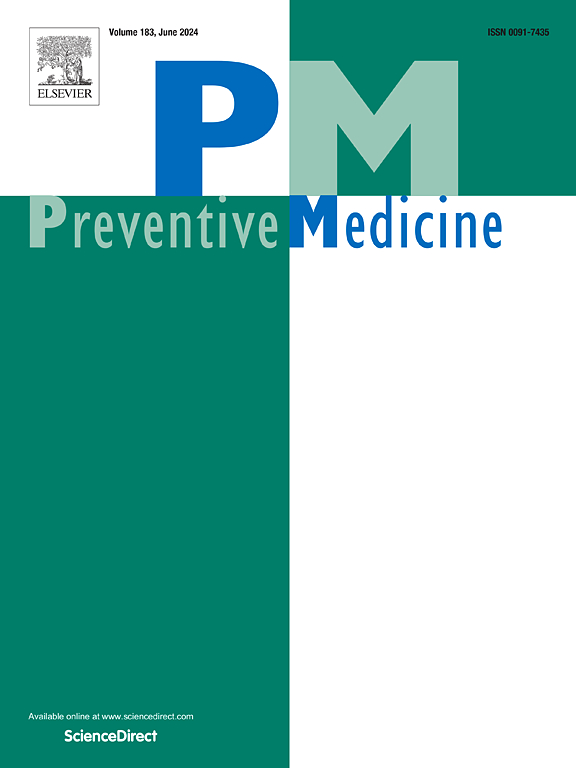Heart failure and cardiomyopathy mortality trends and disparities among obese populations: A 20-year United States study
IF 4.3
2区 医学
Q1 MEDICINE, GENERAL & INTERNAL
引用次数: 0
Abstract
Objective
Our study aimed to assess the heart failure/cardiomyopathy-related population-level mortality trends among patients with obesity in the United States and disparities across demographics.
Methods
We queried the Centers for Disease Control and Prevention's Wide-Ranging Online Data for Epidemiologic Research database among adults aged ≥25 from 1999 to 2019. Heart failure/cardiomyopathy were listed as the main causes of death, with obesity as a contributing cause. We calculated age-adjusted mortality rates (AAMR) per 100,000 individuals and estimated the average annual percent change (AAPC). We also evaluated the social vulnerability of United States counties (2014–2018).
Results
There were 29,334 deaths related to heart failure/cardiomyopathy among patients with comorbid obesity. The overall AAMR increased from 0.41 in 1999 to 0.94 in 2019, with an AAPC of 3.78 (95 % CI, 3.41–4.14). The crude mortality rate increase for heart failure/cardiomyopathy was greater in individuals with comorbid obesity than in those without. Males had a higher AAMR than females (0.78 vs 0.55). African Americans also had higher AAMR than Whites (1.35 vs 0.62). The AAMR was higher in rural areas than in urban regions (0.76 vs 0.66). The overall AAMR was higher in counties with social vulnerability index-Quartile 4 (SVI-Q4) (most vulnerable) (1.08) compared to SVI-Q1 (least vulnerable) (0.63) with a risk ratio of 1.71 (95 % CI: 1.61–1.83).
Conclusion
Heart failure/cardiomyopathy mortality in individuals with comorbid obesity was rising. Males, African Americans, and individuals from rural regions had higher AAMR than their counterparts.
肥胖人群中心力衰竭和心肌病的死亡率趋势和差异:一项为期 20 年的美国研究。
研究目的我们的研究旨在评估美国肥胖患者中与心衰/心肌病相关的人群死亡率趋势以及不同人口统计学之间的差异:我们查询了美国疾病控制和预防中心的广泛流行病学研究在线数据数据库,其中包含 1999 年至 2019 年年龄≥25 岁的成年人。心力衰竭/心肌病被列为主要死因,肥胖也是一个诱因。我们计算了每 10 万人的年龄调整死亡率 (AAMR),并估算了年均百分比变化 (AAPC)。我们还评估了美国各县的社会脆弱性(2014-2018 年):结果:在合并肥胖症的患者中,有29334人死于心力衰竭/心肌病。总体AAMR从1999年的0.41上升至2019年的0.94,AAPC为3.78(95 % CI,3.41-4.14)。合并肥胖者的心力衰竭/心肌病粗死亡率增幅大于未合并肥胖者。男性的 AAMR 比女性高(0.78 对 0.55)。非裔美国人的 AAMR 也高于白人(1.35 对 0.62)。农村地区的急性心肌梗死死亡率高于城市地区(0.76 对 0.66)。社会脆弱指数四分位数(SVI-Q4)(最脆弱)县的总体急性心力衰竭死亡率(1.08)高于 SVI-Q1(最不脆弱)县(0.63),风险比为 1.71(95 % CI:1.61-1.83):结论:合并肥胖症的心力衰竭/心肌病患者死亡率呈上升趋势。男性、非裔美国人和来自农村地区的人的AAMR高于同类人群。
本文章由计算机程序翻译,如有差异,请以英文原文为准。
求助全文
约1分钟内获得全文
求助全文
来源期刊

Preventive medicine
医学-公共卫生、环境卫生与职业卫生
CiteScore
7.70
自引率
3.90%
发文量
0
审稿时长
42 days
期刊介绍:
Founded in 1972 by Ernst Wynder, Preventive Medicine is an international scholarly journal that provides prompt publication of original articles on the science and practice of disease prevention, health promotion, and public health policymaking. Preventive Medicine aims to reward innovation. It will favor insightful observational studies, thoughtful explorations of health data, unsuspected new angles for existing hypotheses, robust randomized controlled trials, and impartial systematic reviews. Preventive Medicine''s ultimate goal is to publish research that will have an impact on the work of practitioners of disease prevention and health promotion, as well as of related disciplines.
 求助内容:
求助内容: 应助结果提醒方式:
应助结果提醒方式:


